Remedial therapy.
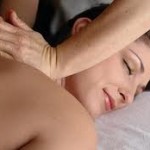
There are many types of body work that can treat various aches and pains, at Acu-Care Naturopathics we use the most successful of these therapies to enhance acupuncture treatment.
The following therapies are not available as individual therapies, however they are used alongside acupuncture treatment as and when required.
What is remedial therapy ?
The term remedial therapy refers to massage treatment that is designed to treat various conditions, for example sports injuries and muscle strains. Remedial therapy uses various techniques to achieve this, such as; Trigger point, M.E.T, deep tissue techniques, stretch therapy, joint mobilisation, thermo and cryotherapy and myofascial release.
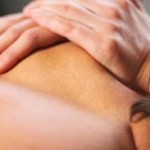
Remedial therapy techniques can be employed with acupuncture treatment for most kinds of pain syndromes that are commonly treated with acupuncture, these pain syndromes are often caused by either a muscle imbalance or a trigger point (a trigger point is a tight knot in a muscle, that can cause severe pain.)
Part of your acupuncture treatment may involve body work that is deemed suitable for your condition, for example if you have a muscle imbalance that is causing you lower back pain, applied Kinesiology would be used to identify the weak or tight muscle that is likely causing the problem and once the muscle is identified I will select an appropriate treatment to either strengthen the muscle or loosen the muscle, this would likely be a combination of acupuncture, M.E.T and cupping or whatever individual treatment may be required to reduce the pain level and increase your range of motion. For more information on the type of body therapies used at Acu-Care Naturopathics, please read on.
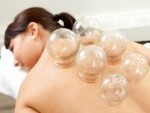
Cupping Therapy.
Cupping is a therapy that has been in use since 1550 BC and is commonly used in the middle east and many Asian countries, more specifically it is part of the training of many acupuncturists and Tui Na therapists (Chinese remedial therapists) cupping is used for pain syndromes such as, back pain, neck pain, shoulder pain, Arthritis, headaches, or sluggish circulation etc. Typically cupping is applied with the client lieing either face down or face up, depending on the area to be treated and up to ten cups can be used in a single treatment.
The cups used in treatment are generally made of either plastic or glass, (these cups are specifically designed for therapy) for safety reasons I use the plastic ones. The cups are placed on or near the area of pain, air is then drawn out of the cups, this creates a vacuum and the skin is pulled into the cup, the cups are left in place for 5-15 minutes, again depending on the condition that is being treated.
Cupping can be described as relaxing and many people enjoy the experience as it can often bring instant pain relief and can help eliminate toxins and boost the lymphatic and immune system. If cupping is to be used for your condition I will discuss this with you prior to treatment.
Please note:

Due to the vacuum created by these cups significant bruising can appear once the cups have been removed from your body, this is normal for this type of therapy and these bruises will disappear within a few days.
If you are in a position where bruising on your body would not be acceptable then cupping is not recommended for you, even though its therapeutic activity may be an advantage to you. Please note: cupping is contra-indicated in people taking anti-coagulant medication, anemia or people who have a pace maker.
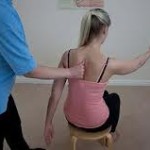
Dorn spinal therapy
Dorn spinal therapy (DST) has its origins in Germany and has been used there for over thirty years.
The technique is simple and involves a quick spinal assessment along with a leg length comparison and once complete treatment can begin. Treatment with Dorn spinal therapy involves finding vertebrae on the spine or neck that are not aligned with the rest of the vertebrae of the spinal column, pressure is then applied to the misaligned structures and along with the clients own leg or arm movements the structures are gently coaxed back into alignment.
It is common during the spinal assessment to find several vertebrae out of alignment. I am a qualified practitioner of Dorn Spinal therapy and it is employed with some clients that present to the clinic with back pain that has become chronic. If this therapy is to be used on you as part of your treatment plan it will be discussed with you at the time of your consultation.

What is Bowen therapy?
Bowen therapy has become a very popular treatment world wide for all types of aches and pains and is suitable for all ages as it is a very gentle, non invasive, quick muscle release technique, that can be applied through clothing.
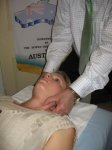
Bowen therapy was founded by the late Tom Bowen, an Austrlian who passed away in 1985. Tom Bowen was so successful in treating his patients with this therapy that he was known to treat some 8000 people per year and many of them would fly to Australia from the UK and the USA just to be treated by him.
Since then, Bowen therapy has gained world wide attention and is now practiced world.
There are now several different styles of Bowen therapy and they are all very good, I have trained in 3 of them and I typically use Bowen therapy on patients prior to their acupuncture treatment especially when they present to the clinic with low back pain, neck pain and leg pain. Bowen therapy also assists in detoxifying the body , boosting the immune system and helps to restore overall balance. If Bowen therapy is to be used as part of your treatment plan, this will be discussed with you prior to treatment.

Trigger point
Trigger point therapy is commonly used world wide and is part of remedial therapy training. Trigger point is used by acupuncturists, massage therapists, physiotherapists and some chiropractors and osteopaths.
A trigger point is described as a knot in a muscle that can vary in size from a pin head to the size of a pea, and when pressed, they reproduce the pain that brought you to the therapist in the first place.
You can have one trigger point or several, you can have them in one muscle or several muscles, they can also be extremely painful often feeling as if you have a trapped nerve.
It is unknown why people develop trigger points, certainly some sedentary type jobs can cause them, repetitive type jobs can also be the culprit, however surprisingly enough research has found that babies can be born with them.
There are several ways of releasing trigger points, one is via direct pressure using the thumbs and maintaining this pressure for several minutes, the second is applying dry needling techniques and the third is cupping.
Trigger point therapy is often an uncomfortable therapy to experience, however the results are well worth the temporary discomfort you may experience in exchange for the pain relief you receive and once again if trigger point is to be used as part of your treatment plan, this will be discussed with you at the time of consultation.
Regardless of your medically diagnosed condition acupuncture and natural medicine is a great choice.

If you would like to find out more about acupuncture and how it can help your health and wellbeing then call 9478-1415 or text to: 0410094602 or email us via our contact page to discuss your requirements, to find out more about acupuncture please go to our FAQs page. Alternatively give acupuncture a try and make an appointment now.
Best of health.
Paul Neilson L.Ac. ND. DHM.
Acu-Care Naturopathics is central for the suburbs listed below.
Ascot. Ashfield. Bassendean. Bayswater. Beechboro. Belmont. Bentley. Burswood. Cannington. Carlisle. Como. Dianella. East Perth. Forrestfield. Guildford. Highgate. Highwycombe. Inglewood. Kalamunda. Kewdale. Lathlain. Leederville. Lesmurdie. Maylands. Midland. Morley. Mt Lawley. Noranda. North Perth. Perth. Redcliffe. Rivervale. South Perth. St James. Subiaco. Welshpool. West Perth. Tuart Hill. Victoria park. vic park








